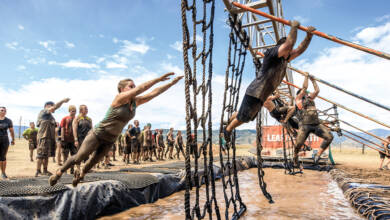Falconry in Arabia dates back more than 2,000 years, and its roots have been traced to the Mesopotamian Epic of Gilgamesh. Falcons are not native to the UAE, and it is not known exactly when falconry emerged in the country, but it is one of its oldest and most beloved traditions.
The two main species used for hunting in the UAE are the Saqr Falcon (Falco Cherruq) and the Peregrine falcon (Falco Peregrinus).
Saqr Falcons have brown upper bellies and contrasting grey flight feathers. The head and underparts are paler brown, with streaking from the breast down.
The Saqr is more popular in UAE because it is well suited for the desert, and the female which is larger and more powerful is deployed far more frequently than the male. The female Peregrine is also preferred over the male, for hunting.
Training the falcon
Preparing the bird
It starts with the capture of this fragile bird. Burgu (leather hood) is put over its eyes, and it is given very little food to prepare it for training.
Knowing the bird
The trainer stays with his falcon 24/7 for the first few weeks, forming a necessary bond between trainer and bird.
At this time the falconer names the bird, and begins to let him move from his arm to Wakir (wooden perch), while tethered with a Sabbuq (leather strap).
Training with the lure
Eventually the falcon will be permitted to make short flights. The falconer will then stand with the lure (telwa) and some raw meat a short distance from the bird. A companion removes the birds’s hood whilst the falconer calls the bird’s name and swings the lure. When the bird catches the lure the falconer rewards it with a little raw meat.




